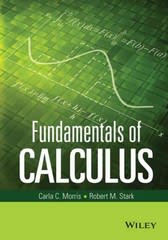Pretend that thus far you have collected only 60 samples. However, you are anxious to see some preliminary results. Using the first 60 rows of this data set, estimate the sample proportion for the proportion of students who have pulled an all- nighter this semester and if possible, create a confidence interval at a 95% confidence level. p = Check the conditions. Step 1: We have a random sample, so the first condition is met. Step 2: Now check that the sample size is large enough. n . p = n . (1 - p) = If the conditions are met, type the margin of error. (Round your answer to two decimal places. If the conditions are not met, enter NA.) If the conditions are met, type the confidence interval in the format (lower limit, upper limit). (Round your answers to two decimal places. If the conditions are not met, enter NA.) You have continued collecting samples and now have 100 samples. You are anxious to see some preliminary results. Using the first 100 rows of this data set, estimate the sample proportion for the proportion of students who have pulled an all- nighter this semester and if possible, create a confidence interval at a 95% confidence level. p = Check the conditions. Step 1: We have a random sample, so the first condition is met. Step 2: Now check that the sample size is large enough. n . p = n . (1 - p) = If the conditions are met, type the margin of error. (Round your answer to two decimal places. If the conditions are not met, enter NA.) If the conditions are met, type the confidence interval in the format (lower limit, upper limit). (Round your answers to two decimal places. If the conditions are not met, enter NA.) You have finished your data collection and now want to come up with the final estimate for the proportion of students who have pulled an all-nighter this semester. Use all the data to calculate the sample proportion for the proportion of students who have pulled an all-nighter this semester and if possible, create a confidence interval at a 95% confidence level. (Round your answer to three decimal places.) p = Check the conditions.Step 1: We have a random sample, so the first condition is met. Step 2: Now check that the sample size is large enough. (Round your answers to the nearest integer.) n . p = 13 n . (1 - p) = 112 If the conditions are met, type the margin of error. (Round your answer to two decimal places. If the conditions are not met, enter NA.) 0.05 If the conditions are met, type the confidence interval in the format (lower limit, upper limit). (Round your answer to two decimal places. If the conditions are not met, enter NA.) 0.05 0. 16 Compare the margin of error for your results from the previous questions. What do you observe? As the sample size increases, the margin of error decreases. This answer has not been graded yet. It is estimated that about one in three American adults do not get sufficient sleep on a regular basis. Is this proportion consistent with your final estimate for the proportion of students who pull all-nighters? O Yes, it is. O No, it is not








